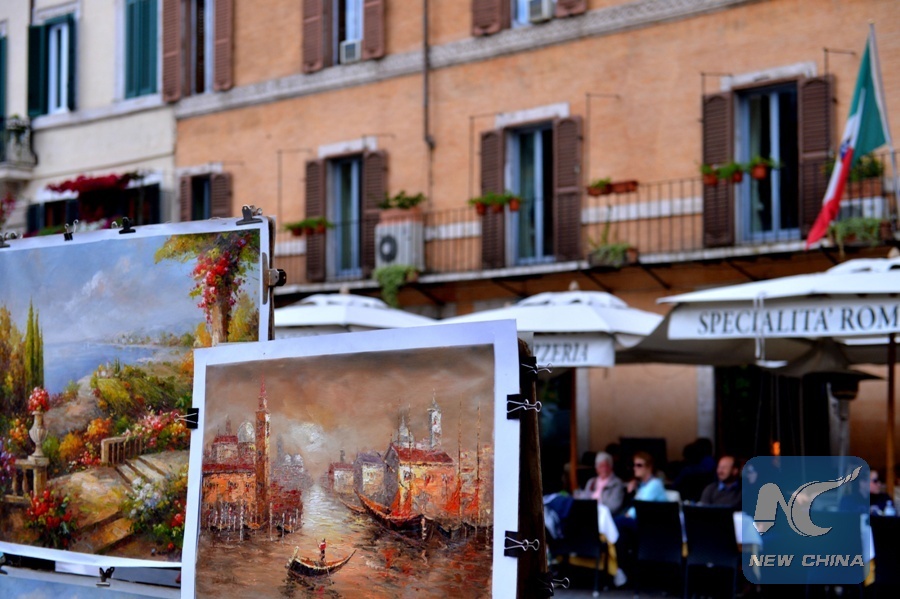
Drawings by street artists are seen at the Piazza Navona in Rome, Italy. Located in the central region of the Italian Peninsula, a plain downstream Tiber, Italy's capital city Rome, enjoys a world-wide reputation for its history and culture. Rome is the birthplace for the Roman Empire and one of the major centers of Renaissance. Its historic sites and ancient relics attracts tourists from around the globe. In 1980, the historic center of Rome was listed by UNESCO as a World Heritage Site. (Xinhua File Photo/Xu Nizhi)
SAN FRANCISCO, July 3 (Xinhua) -- A team of researchers, including some from Stanford University, have created a new archive of almost 4,000 digitized drawings, prints, photographs and sketches of historic Rome from the 16th to 20th centuries.
The pieces were collected by renowned Roman archaeologist Rodolfo Lanciani, who sought to document the entire history of Rome's archeology up to the end of the 19th century. And the digital exhibit, which went online in the spring, is expected to help study Rome's transformation over the centuries.
After Lanciani's death in 1929, his library, which contains more than 21,000 items, was sold to Italy's National Institute of Archaeology and Art History in Rome. Archaeologists, historians, architects and other researchers who study ancient cities have used the collection to glean valuable information about Rome's history and structure.
"These materials are very important and have been used by many different scholars, but access to them is quite limited," said Roman archaeologist Giovanni Svevo, who also worked on the digital archive, which is a culmination of a two-year collaboration among Stanford's Center for Spatial and Textual Analysis (CESTA), the Stanford University Libraries, University of Oregon, Dartmouth College and the Italian government.
"Rome is a layered city," said Erik Steiner, co-director of the Spatial History Project at CESTA. "To be able to see that history you need to look through those layers, and this collection helps that process."
Viewing Lanciani's collection requires a visit to the historic 15th-century Palazzo Venezia in central Rome. It is on the fourth floor and in its own dedicated room, which is open for only a few hours during weekdays. Only one folder from the collection can be viewed at a time.
So the professors and researchers set out to bring some of the collection onto the internet. They partnered with Italy's Ministry of Cultural Heritage and Activities and Tourism and the National Institute to scan and create high-resolution images of each of the thousands of materials in the collection.
Each digital object was categorized and tied to a descriptive set of data, so it could be properly stored and searched online. And the digital images and all associated descriptions are now permanently preserved in the Stanford Digital Repository.
It is part of a larger effort to recreate the spatial history of Rome, a project named "Mapping Rome," that Steiner and Tice began around 2004.
"We believe this project is important for two reasons: it provides accessibility to a precious archival collection and, more broadly, it demonstrates a method whereby similar materials can be made available to scholars, students and the general public through the digital humanities," Tice was quoted as saying in a recent news release from Stanford.
Beside allowing access to any scholar in the world, Steiner noted, digitizing the archives also ensures their future preservation.

